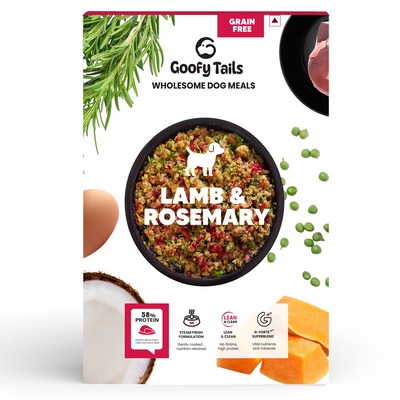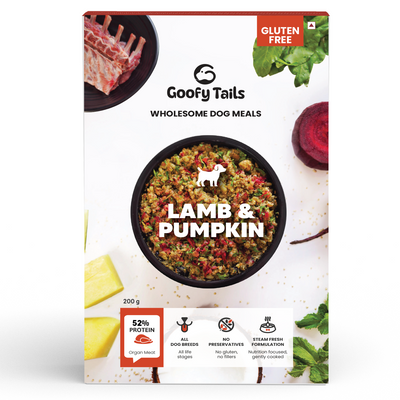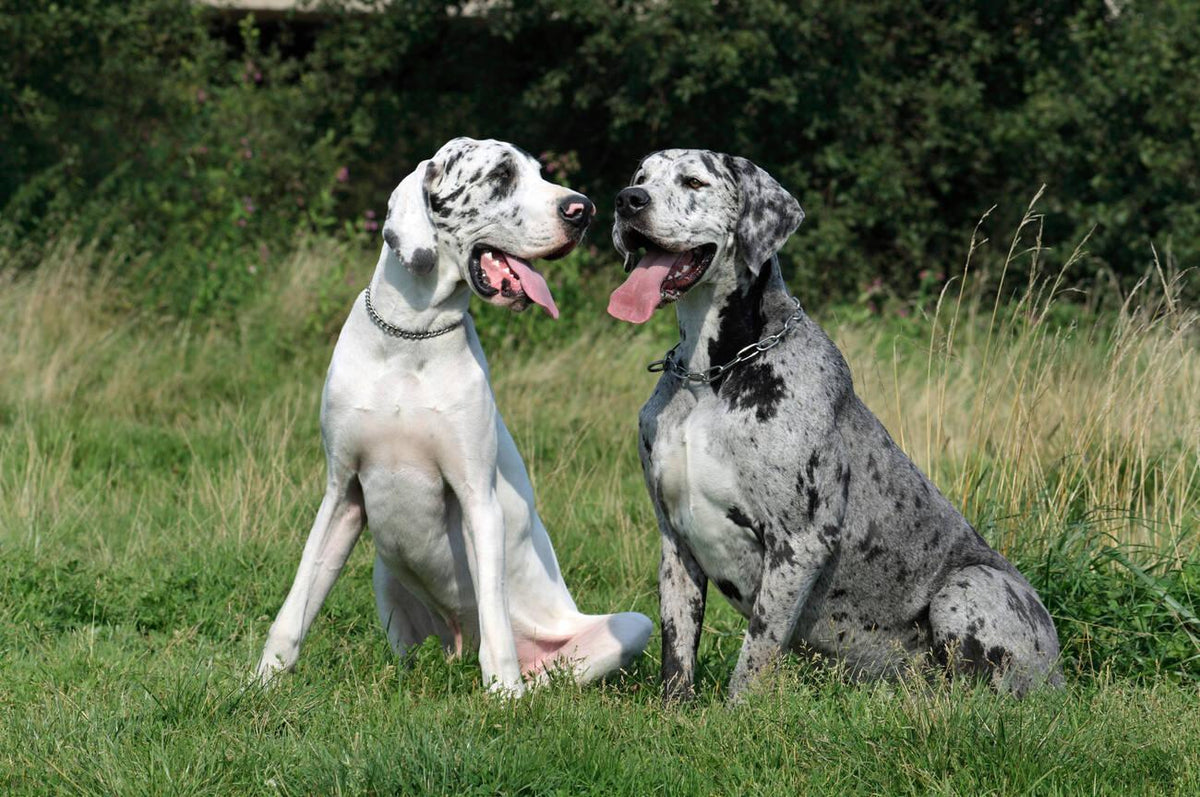
Breed History
Great Danes descend from a mix of English Mastiffs and Irish Wolfhounds, producing a tall, muscular dog capable of both hunting and protecting. Over time, selective breeding emphasised their gentle temperament, transforming them into majestic companion dogs rather than fierce hunters.
Food for your Great Dane
-
Great Danes are giant, slow-maturing dogs with high caloric needs during growth, but a slower metabolism as adults. Lean proteins like chicken or lamb provide essential amino acids to support muscle development, energy, and strength.
-
As a breed prone to hip dysplasia, arthritis, and bloat, it's important to include joint-supportive nutrients like glucosamine, chondroitin, and omega-3 fatty acids to reduce inflammation and support mobility and structural integrity.
-
Adding bone broth made from lamb bones is a nutritious way to enhance meals. Rich in collagen, amino acids, and minerals, it supports hydration, gut health, joint lubrication, and improves food palatability.
-
Choose natural, low-fat treats such as freeze-dried options that are free from artificial additives. Due to their size, Great Danes can overconsume calories quickly, so treats should be portion-controlled and used to reinforce training.
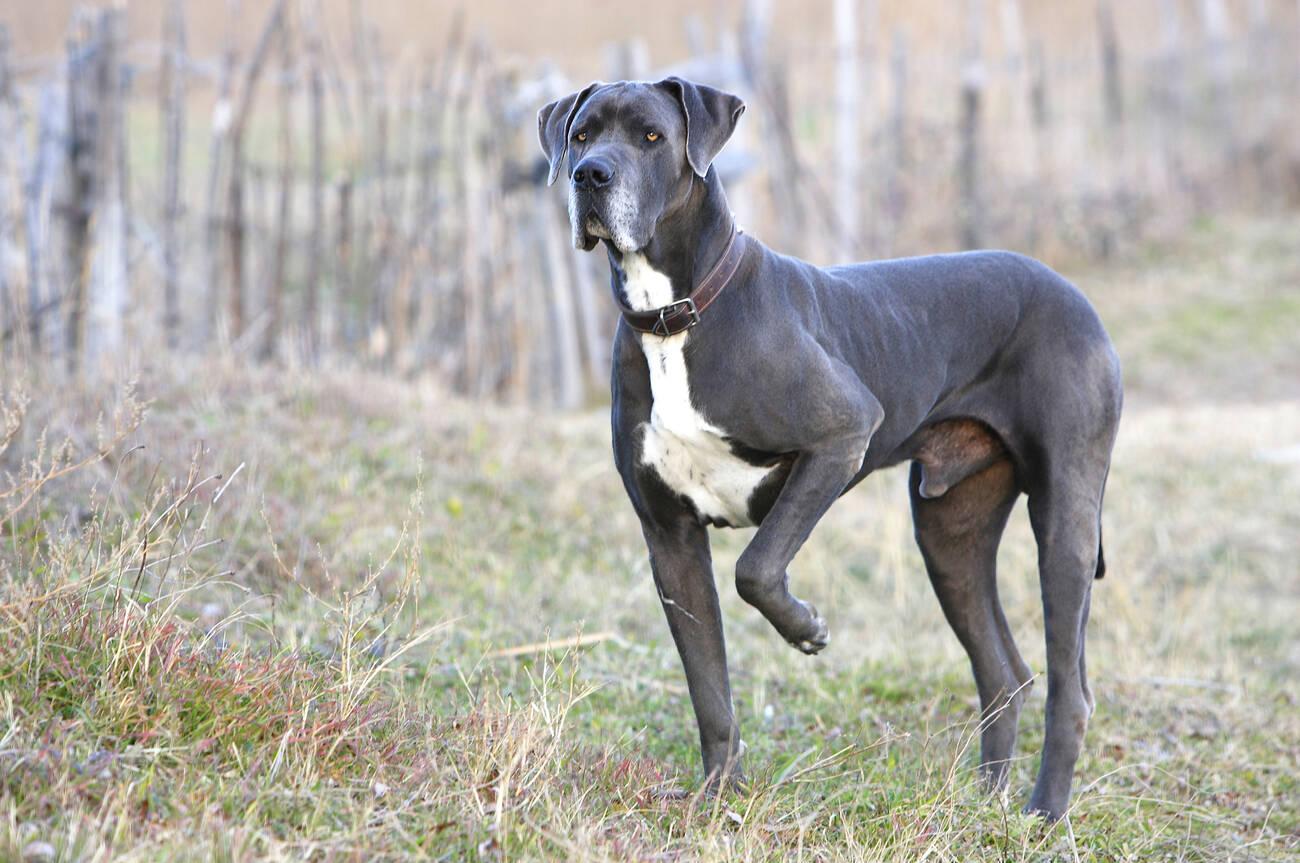
Training your Great Dane
-
The Great Dane is a gentle and intelligent giant. While generally eager to please, their sheer size and occasional stubborn streak make early, consistent training essential for safe and respectful behavior.
-
Danes respond best to clear structure and daily routines. Using calm tones, steady commands, and gentle repetition helps them build confidence and understand household expectations without confusion.
-
Positive reinforcement is highly effective. Great Danes are sensitive and bond deeply with their people, so training should emphasize trust, praise, and consistency rather than correction or pressure.
-
Early socialization is critical. Introducing them to varied people, pets, and environments from puppyhood helps reduce anxiety and encourages calm, balanced reactions as they grow.
-
To stay mentally fulfilled, Great Danes benefit from light obedience work, interactive toys, and gentle enrichment games that stimulate their minds without overly taxing their joints.
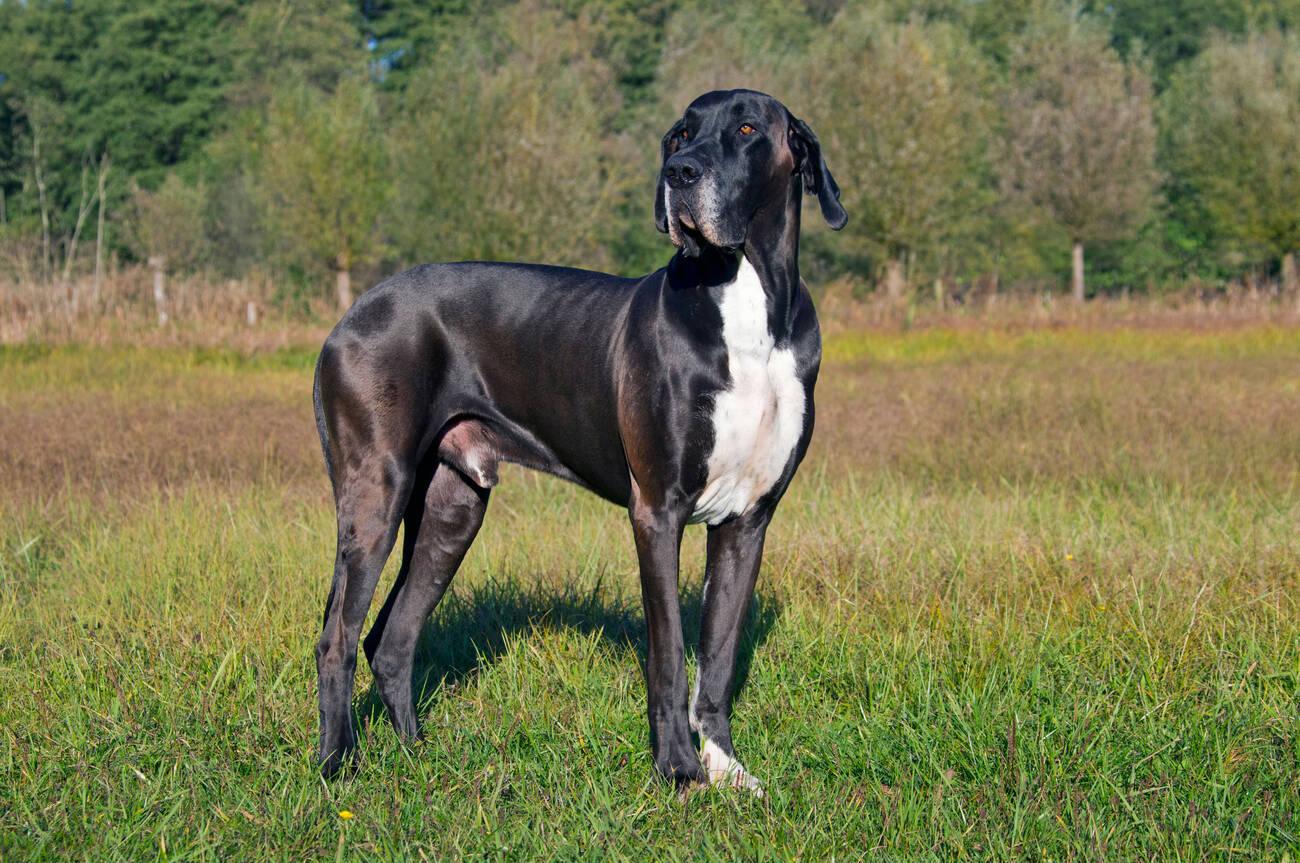
Recommended Treats
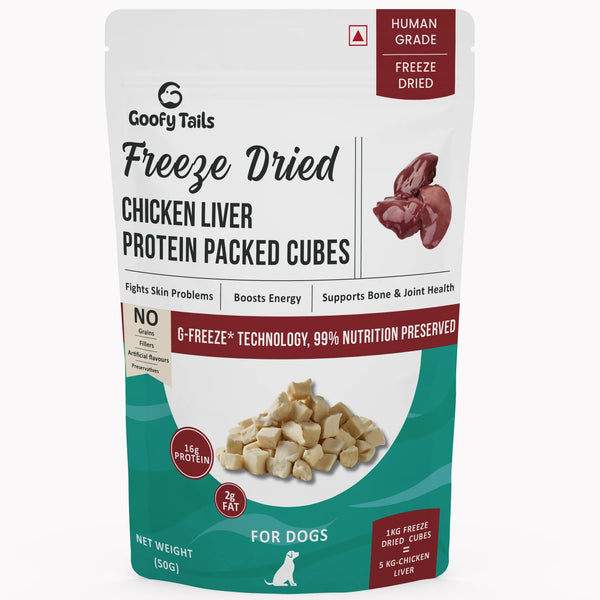
Freeze-Dried Chicken Liver
Packed with real, raw nutrition, these dog treats offer the convenience of freeze-dried goodness. These treats are gluten-free and grain-free, catering to dogs with dietary sensitivities or specific needs. Designed to promote digestion and overall well-being, they are perfect for dogs with sensitive stomachs.
Exercising your Great Dane
-
Great Danes are gentle giants with moderate stamina and require at least 1–1.5 hours of daily exercise. Regular, structured activity keeps their large bodies healthy, supports heart function, and helps prevent weight-related joint stress.
-
They enjoy leisurely walks, short runs, and light play in open spaces. While not built for endurance, varying the environment keeps them mentally engaged without overexertion.
-
Like other intelligent working dogs, Kangals need mental enrichment alongside physical workouts. Obedience training, scent work, and structured challenges help channel their independent instincts into positive, manageable behaviors.
-
Without regular outlets, Great Danes may become lazy, anxious, or destructive. A predictable routine of activity, attention, and calm training is key to their emotional balance.
-
Due to their massive size and joint sensitivity, focus on low-impact exercise like controlled leash walks, short swimming sessions, or soft-surface play to avoid injury and protect long-term mobility.
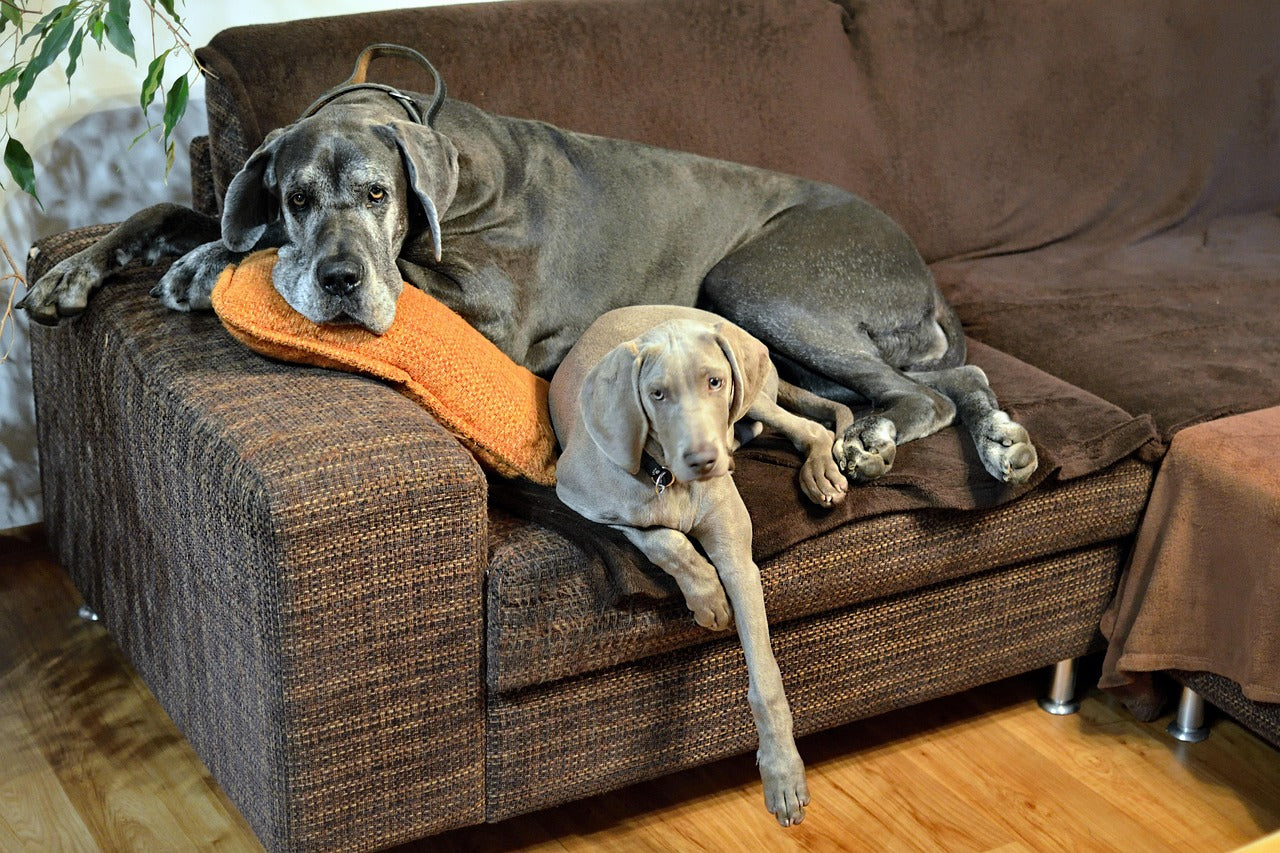
Recommended Supplement
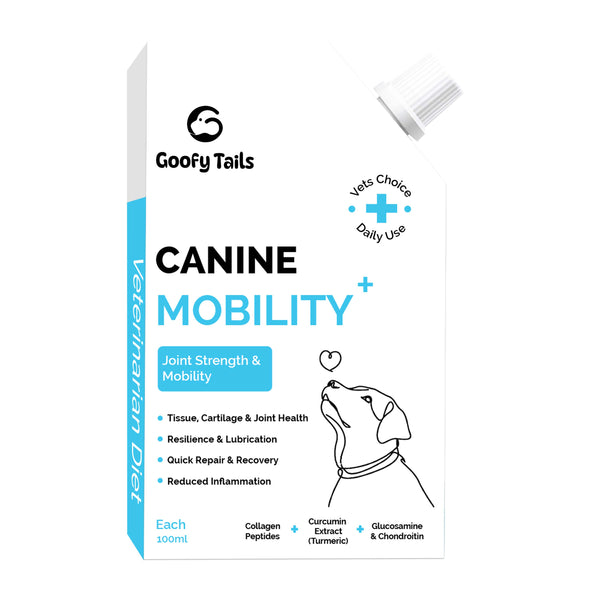
Canine Mobility+
A fortified broth specially formulated for dogs, enriched with collagen, glucosamine, curcuminoid, and chondroitin to enhance flexibility, ease stiffness, and promote long-term mobility. Highly palatable and ideal for senior dogs, breeds prone to joint issues, dogs recovering from fractures or injuries, and athletic dogs under joint stress.
Things to consider before getting a Great Dane
-
Great Danes are gentle yet powerful companions that require dedicated time, training, and care. They need daily walks, mental engagement, and a stable routine to stay healthy and happy.
-
Due to their giant size, Great Danes need plenty of indoor space and easy access to outdoor areas. While they can adapt to apartment life, they do best in homes with space to stretch and a calm, low-clutter environment.
-
Though known for their sweet temperament, Danes can be sensitive and stubborn. Early socialization, gentle training, and consistent boundaries are essential to raise a well-mannered, relaxed adult.
-
Like other giant breeds, Great Danes are prone to hip dysplasia and bloat. Owners should focus on high-quality, joint-supportive food, feed smaller meals multiple times a day, and avoid intense activity right after eating.
-
Great Danes have short, smooth coats that shed moderately throughout the year. A weekly brushing helps remove loose hair and keeps their coat glossy while also offering a chance to check for skin issues.
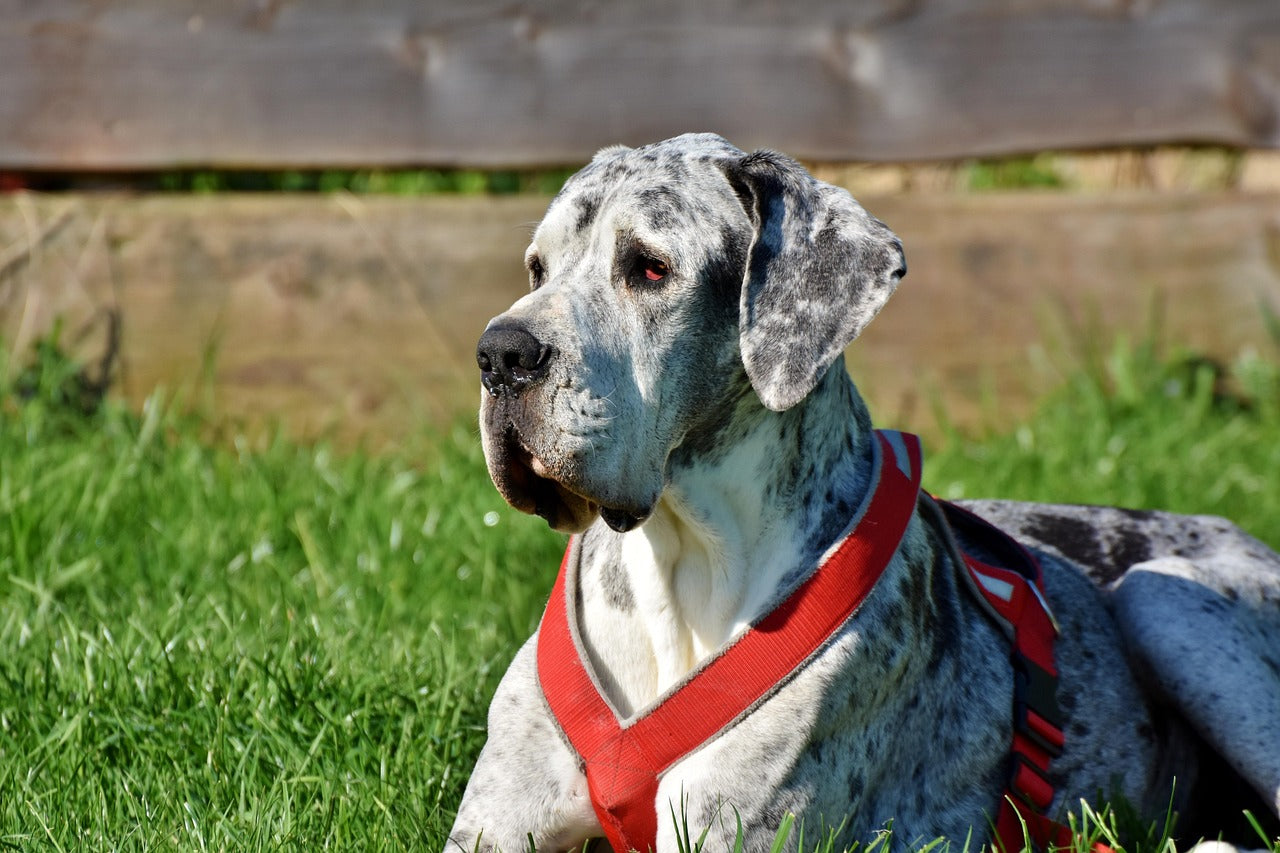
Frequently Asked Questions
Often! While they’re huge in size, they’re actually low-energy couch potatoes indoors. But they still need daily walks to stay fit and healthy.
A giant-breed-specific formula with moderate protein, low calcium-phosphorus, and joint support is ideal, especially during growth phases.
They’re big and fast-growing, so awkwardness is normal in puppies. With maturity and training, they become graceful (in a gentle giant kind of way!).
Yes. They’re eager to please and gentle, but need positive reinforcement and early socialization to prevent anxiety or stubbornness.
Not usually. They’re quiet and reserved, but they do have a deep, thunderous bark when they feel protective or alert.
Yes! With proper training, they’re gentle, affectionate, and tolerant, though their size means supervision around small children is important.
Not for long hours. They are loyal and sensitive, and extended alone time can lead to boredom or separation anxiety.
Danes are prone to bloat, hip dysplasia, cardiomyopathy, and arthritis. Regular vet visits and a careful diet are essential.
Surprisingly, yes, if space is manageable and walks are consistent. They’re quiet, calm indoors, and don’t need a massive yard, just a cozy couch.
Yes! Despite their size, they love cuddling and often try to sit in your lap like a 10-pound pup. Prepare for full-body snuggles! 🐾










